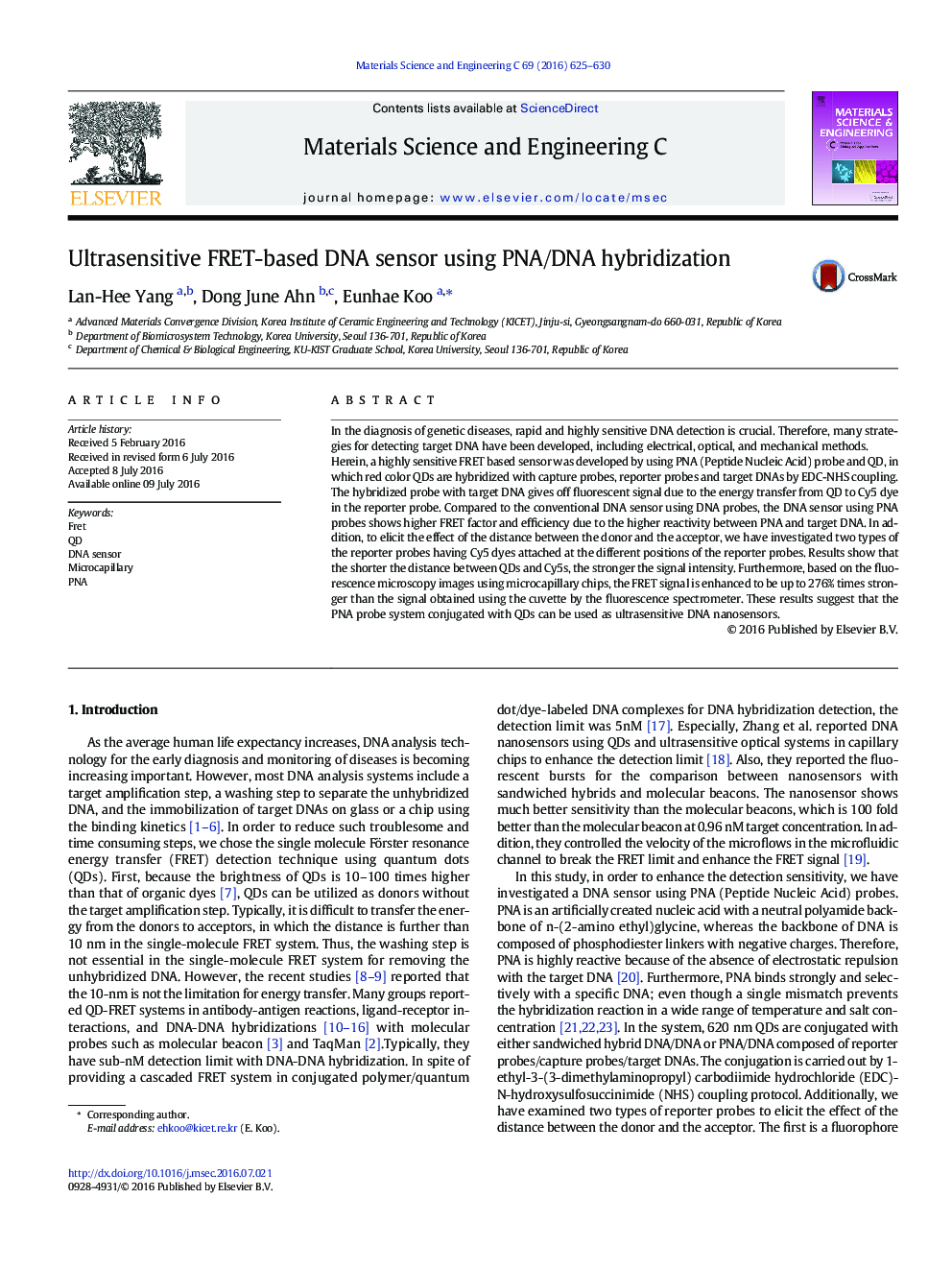| Article ID | Journal | Published Year | Pages | File Type |
|---|---|---|---|---|
| 1427895 | Materials Science and Engineering: C | 2016 | 6 Pages |
•A highly sensitive FRET based sensor using PNA (Peptide Nucleic Acid) probes and QDs has been investigated.•The FRET efficiency relies on the probe types, the distance and the ratio of the donor/acceptor.•FRET sensor using PNA probes shows higher FRET efficiency and FRET factor.•Using microcapillary chips, the PNA probes can enhance the FRET signal up to 276%.
In the diagnosis of genetic diseases, rapid and highly sensitive DNA detection is crucial. Therefore, many strategies for detecting target DNA have been developed, including electrical, optical, and mechanical methods.Herein, a highly sensitive FRET based sensor was developed by using PNA (Peptide Nucleic Acid) probe and QD, in which red color QDs are hybridized with capture probes, reporter probes and target DNAs by EDC-NHS coupling. The hybridized probe with target DNA gives off fluorescent signal due to the energy transfer from QD to Cy5 dye in the reporter probe. Compared to the conventional DNA sensor using DNA probes, the DNA sensor using PNA probes shows higher FRET factor and efficiency due to the higher reactivity between PNA and target DNA. In addition, to elicit the effect of the distance between the donor and the acceptor, we have investigated two types of the reporter probes having Cy5 dyes attached at the different positions of the reporter probes. Results show that the shorter the distance between QDs and Cy5s, the stronger the signal intensity. Furthermore, based on the fluorescence microscopy images using microcapillary chips, the FRET signal is enhanced to be up to 276% times stronger than the signal obtained using the cuvette by the fluorescence spectrometer. These results suggest that the PNA probe system conjugated with QDs can be used as ultrasensitive DNA nanosensors.
